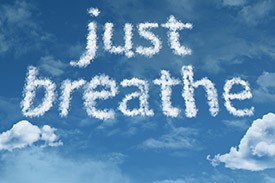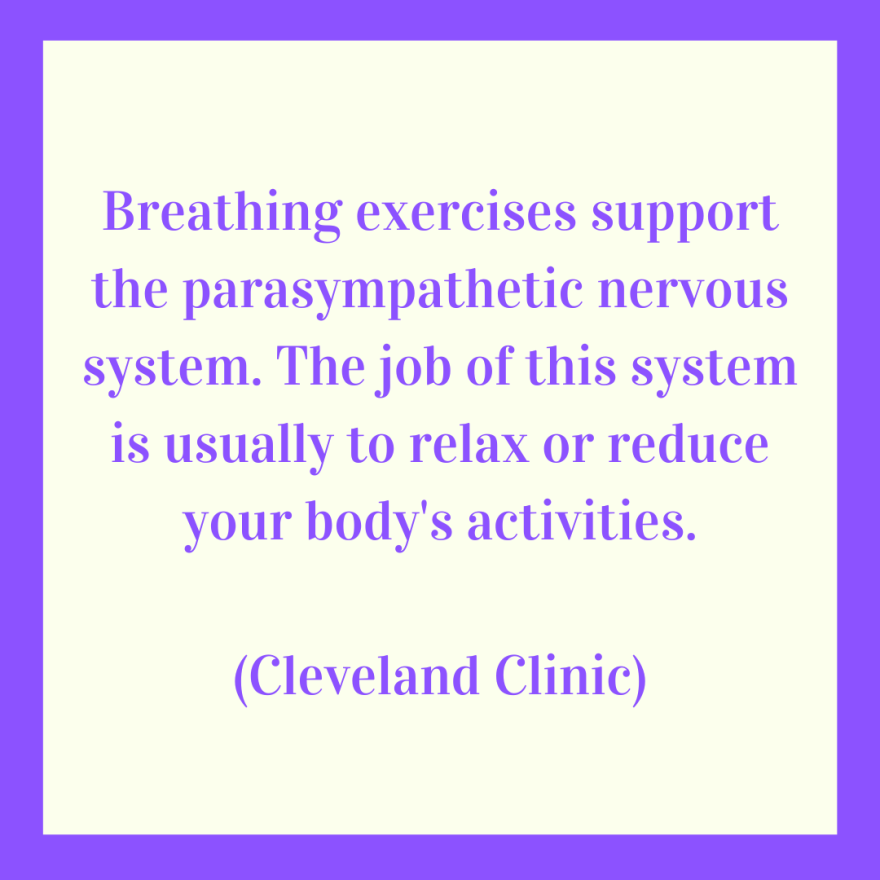|
Thanksgiving, final exams, holidays, new year, new academic semester… Did you feel your stress levels rise just by reading these words? If so, you are not alone. The American Psychological Association found that 38% of people say their stress increases during the holidays.
|
Think about a time when you’ve had too much on your plate. Did someone tell you to “just breathe” to manage the stress? Did you take the idea seriously? Or did you roll your eyes at the simple advice? While the command “just breathe” may be overly broad and unhelpful advice, specific breathing exercises can help people manage stress.
|
 |
This weekend I saw an advertisement for Chris Hemsworth’s docu-series “Limitless”. I honestly thought it would resemble an action movie (think Thor), but to my surprise it focused on science backed principles and strategies to tame stress. Granted, you may never experience what Hemsworth was exposed to in order to mimic stress, but the information highlighted serves us all.
Dr. Modupe Akinola, a social psychologist at Columbia Business School worked with Hemsworth for the show and taught him three simple strategies, which you can do with no special equipment or Thor type training.
1. Positive self-talk. Pushing away negative thoughts (my clients brainstorm a visual where they use both hands to push away those negative thoughts). Dr. Akinola stated that this exercise may “reduce anxiety and boost performance, shutting out negative thoughts and reminding ourselves we are capable of completing the task” (Limitless episode 1). When you identify negative self-talk you can start shifting perspectives to think optimistically and feel motivated. In simple terms it’s about changing the “I can’t” to the “It may be difficult, and I can.”
2. 'Box breathing' is another tool that can calm your mind and body in high-pressure situations. One of my clients has a fear of public speaking. She researched and adopted tactical breathing (box breathing) to help her feel less anxious. First, inhale through your nose for a count of 4. Second, hold your breath for 4 seconds. Exhale for 4 seconds and pause four seconds, Repeat 4 times. Dr. Akinola said you can imagine the process as tracing a box shape.
3. Chunking down. I often talk about chunking down big projects, tasks, or assignments into smaller pieces. Dr. Akinola applied the segmentation principle to breaking up a scary task into smaller segments to help maintain focus.
The three tips discussed may be simple but have been shown to induce calm. Positive self-talk enables us to cope better with stressful situations and has been proven to reduce stress hormones. Shallow breathing is part of the typical stress response. Box breathing interrupts rapid, shallow breathing, the body's fight-or-flight response to stress. “Limitless” shows Hemsworth focusing on putting one foot in front of the other- segmenting/chunking down a daunting task. His heart rate slowed down, and he was able to regain focus and complete the task one step at a time.

Getting stuck in fight or flight mode (not only during the holidays but also in our everyday lives) can take a toll on our bodies. A study found that two minutes of deep breathing with longer exhalation engages the vagus nerve, increases heart rate variability, and improves decision-making. (International Journal of Psychophysiology). Just two minutes!

Therapists recommend doing breathing exercises regularly during the day. Some good times to incorporate breathing exercises may be during breaks or at moments of transition between activities.
Right now- take a moment to adjust your posture and allow yourself a few minutes of quiet breathing. While you are breathing, don’t forget the benefits of gratitude. A new study suggests that expressing gratitude at work helps people have better stress responses during challenging tasks.
Wishing you a meaningful Thanksgiving. Take breathing breaks and don’t forget to express gratitude every day!
Ana Isabel Sánchez
   
|